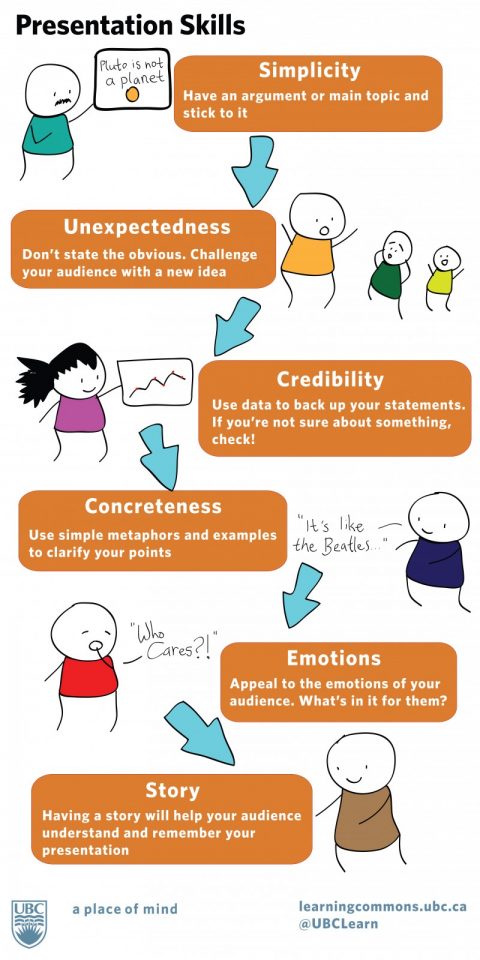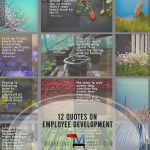Special Delivery – Top 10 Tips for Improving Presentations
These ten tips for improving presentations can help you better-engage your audiences, build prospect lists, convert leads and grow.
You’ve got less than 10 minutes to capture your audience members attention so make improving presentations and your skills a top priority this year.
Some estimate that more than 35 million PowerPoint presentations are given every day and that doesn’t even account for other platforms and tools. Within 10 minutes, if you haven’t captured the interest of an attendee they’ve probably tuned you out for the duration. If you need to deliver presentations that get the attention of prospects, pack a punch, are memorable, and – above all – work to turn leads into customers, these ten tips to improve presentations could help you grow your business and advance your professional career.
10 Tips for Improving Presentations and Your Skills as a Presenter
1. Back up your claims with expert sources and testimonials.
It’s one thing when you say something; it’s another thing when an expert or satisfied customer testimonial is used to back up your brand, product or service claims. Reinforce your main points with third party endorsements.
2. Use high-impact visuals.
Improving presentations is as much about design as it is content and delivery style. Color – in and of itself – creates memory points. Use strong visuals to reinforce the main points of your presentation. Keep visuals consistent in style throughout; extra style points make it more likely that audience members perceive you as a professional, authoritative expert on your topic.
3. Don’t steer clear of controversy.
While you don’t want to offend anyone, you don’t want a presentation as boring, unmemorable and unpalatable as unbuttered toast, either. Don’t be afraid to express a point of view and challenge audience members to think outside the box.
4. Go ahead, beat the dead horse.
Not all presentations end in sales conversions. If you want your audience members to recall your brand when they are ready to buy or want them to tell others about your presentation, you need for your most compelling information to be memorable.
- Feature and repeat a compelling statistic that goes to the core of your message
- Reinforce the main point(s) of your presentation more than once and include them in introductory statements as well as summary statements
- Get the crowd to repeat a response that reinforces the core of your message based on trigger words (for example, I say, “sell,” you say, “more!”)
- When you follow up with attendees, restate one or more of your main points in email or voice mail messages to help them remember the strong points of your presentation
5. Design presentation materials for multi-channel use.
Get more mileage out of presentations by adapting for YouTube, social network shares, web and blog use. Make sure you can email a PDF copy of slides to all meeting participants or those who could not attend.
6. Don’t skip the practice sessions.
Improving presentations and your skills requires practice:
- On your own in front of the mirror
- In front of peers, colleagues or trusted friends
- With the equipment and technology (webinars, podcasts, etc.)
- For timing and time constraints – you’ll look more professional and ensure that you hit the most important parts of your presentation
- In the room before attendees arrive
7. Tell a really good story, really well.
No one likes to be sold, but most of us enjoy a good story. Tell the story of your brand or its services or products as it impacts and improves the lives of real people, the story of your own professional development, the story of your brand’s evolution, etc. in a way that real people can relate to – and enjoy hearing.
8. Make it safe to be less than perfect (play on your own vulnerabilities).
Everyone faces challenges and struggles. Everyone has strengths and weaknesses. Everyone has preconceived ideas and misconceptions. When you speak about your own areas of vulnerability and the lessons you had to learn along the way, you make yourself more believable, relatable and give people reasons to feel personally connected with – and interested in – your company and its products or services.
9. Plan for contingencies. For every planned presentation there should be a Plan B – a contingency plan for connected with your audience.
- You lose power? You’ll need a bullhorn and flashlight – because the show must go on.
- Can’t get PowerPoint or other software to work? Hand out a print copy of slides or email out to webinar registrants and ask them to follow along.
- Snowed out? Move the presentation online.
- The speaker ahead of you goes long? Know what parts of your presentation can be skimmed or eliminated in favor of the most important or compelling points.
10. Always give yourself a way to follow up.
Sometimes we give audience members so much that there’s nothing left to provide a basis for following up. Leave something out, so that you have an opportunity to (1) get contact information and (2) follow up at a later time when those who were not initially ready to buy may be willing to make a purchase or take the next step.
Follow up activities could include things like:
- Sending a copy of the presentation
- Sending a report or study related to the presentation
- Sending a special offer for the next step you want attendees to take
- Answering questions that attendees submitted during or at the end of your presentation
- Sending an invitation to the next event (or next phase of an event series)
Thanks to technology, the opportunities to use presentations to build business abound. From podcasts and webinars to live-streaming or old-fashioned seminars, how much you put in to developing a great presentation is going to determine how much you get out!
***
Infographic: Improving Presentation Skills






